Goldfish Culling - Celestials page 5 / 6
Eyes. This is ultimately what separates the wheat from the chaff. After all, it is the trait by which the Celestial is defined. Celestials, like Telescopes, are born with normal eyes. At about seven to eight weeks, the eyes begin to protrude. Over the course of the subsequent weeks they begin their slow progression, hopefully, toward becoming celestially-oriented. Contrary to what has been written elsewhere, they do not turn immediately upward from the telescopic position, but rather first turn forward and then progress upward. I mention this because if they get ‘stuck’ along the way, it is usually in this forward position. There are many fish that ‘pass’ as Celestials that in fact do not have celestial eyes but forward-facing eyes. A lot can go wrong and often does. You can wind up with eyes of two different sizes or shapes. Both eyes may remain telescopic, but not celestial, or one eye can get stuck along the way as the other continues to move. Ideally the size of the pupils should be fairly large and identical—this giving the fish their unique expression and the best vision. They are often mismatched. The pupils should remain fairly large through adulthood. If they shrink to the size of tiny dots, and/or if the surface of the eye becomes covered in guanine, the fish is almost certainly blind in that eye. The pupils should be oriented in the same direction as well. And finally, the lower 2/3 of each eye is encased in a thin membrane and some of these develop into small sacs and some actually become ‘bubbles,’ no doubt pointing to the presumed relationship between Bubble Eyes and Celestials. This is very common and persistent and I select against it. Here is the only series of photographs I know of—from 1954--that chronicles the progression of eye development:
At 3 weeks—normal eyes:
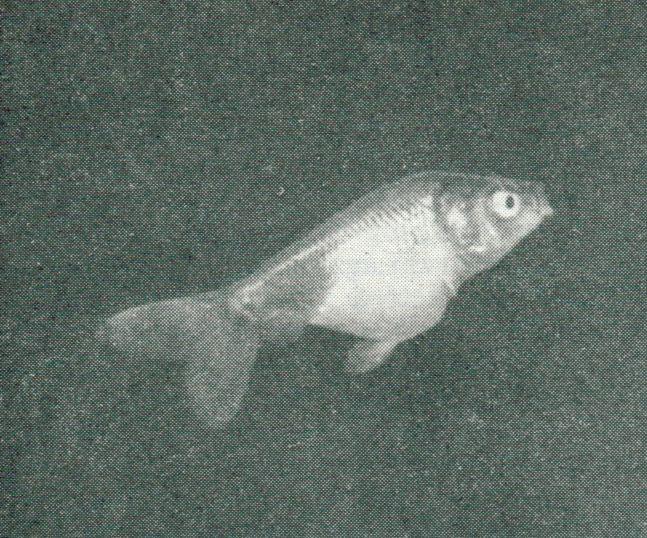
At 7 weeks—just protruding:
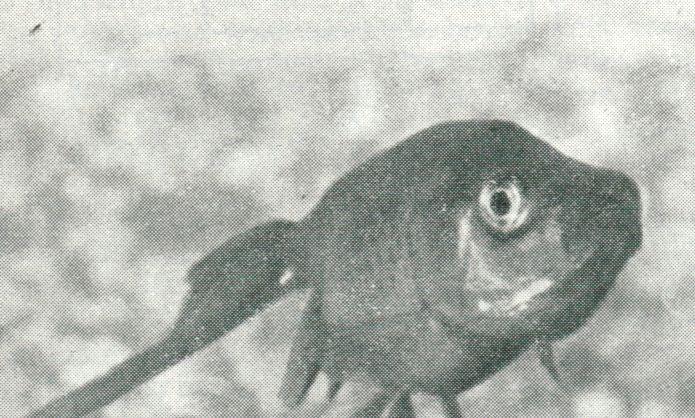
At 10 weeks—telescopic and moving forward. Note the ‘knob’ on back.
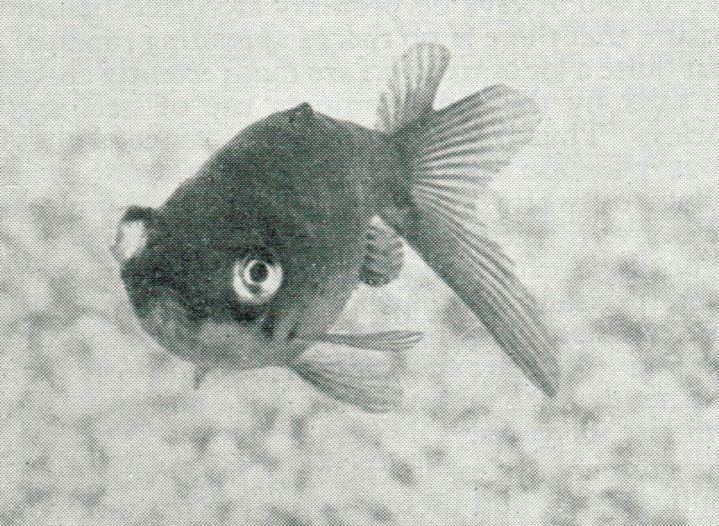
At 12 weeks—beginning to move from forward-facing to celestial. Note the roller coaster back:

At 14 weeks—continuing to move up:
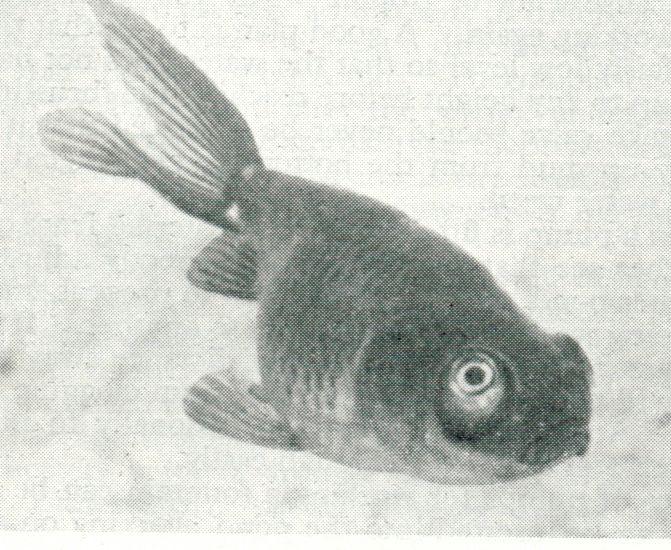
And two of the siblings at 7 months:

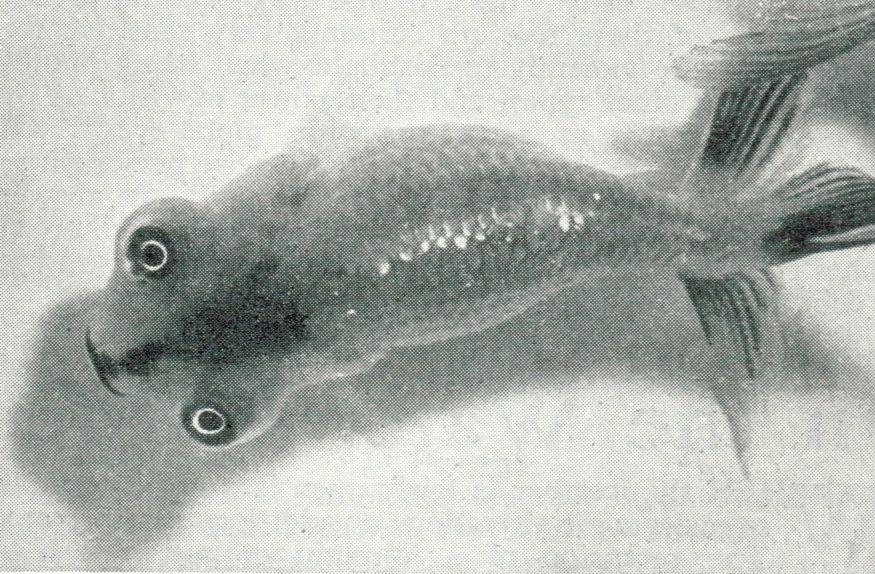
And some of the same siblings in their second year:
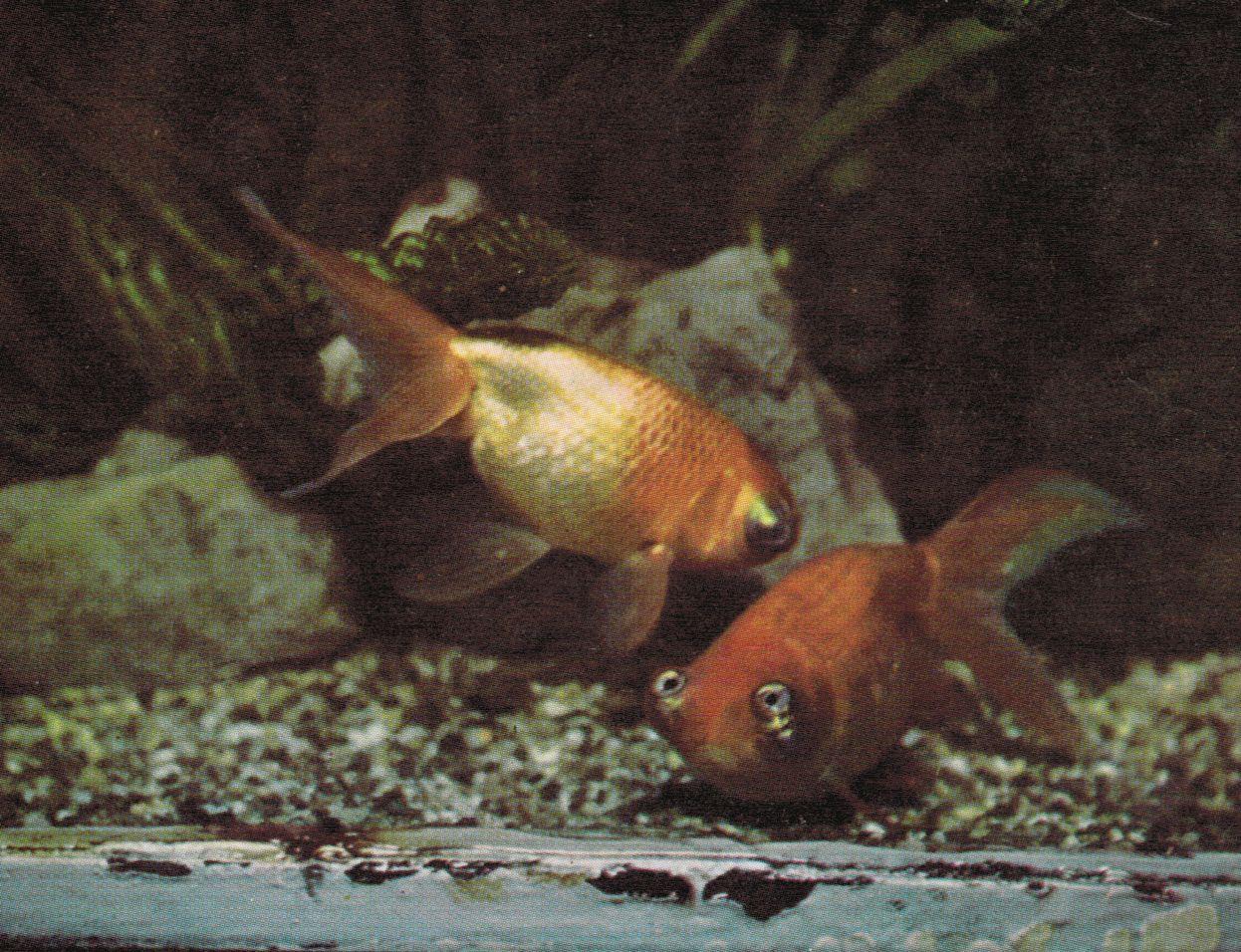
The entire ‘journey’ of the eyes can be accomplished in as quickly as 14 weeks, or can go on for months. I’ve had Celestials whose eyes continued to move well into the second year. Here’s a photo of a few youngsters from my most recent generation at about 16 weeks, if memory serves:
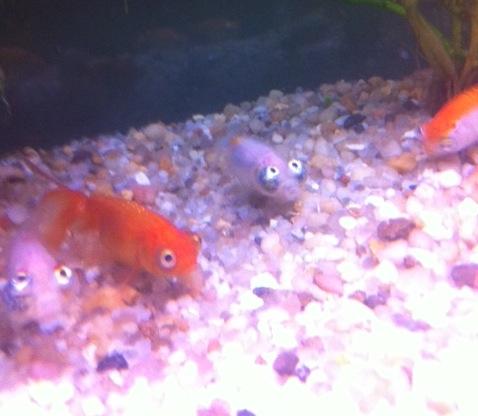
The two mostly white fish had eyes that quickly moved into perfect position. The red fish, in the middle, had eyes that moved more slowly and got stuck in the forward-facing position and remained stuck, not budging, for over two months. At the same time, a slight peduncle flaw worsened and simultaneously his caudal began to take off producing too much length. It began to droop. He lives elsewhere now, but see the picture below for an update on his eyes. The red and white fish, to the far right, just poking its head into the frame, at the time of this photo had one telescopic eye and one that was beginning to move into a celestial position. The eyes on this fish continued to move and now, five months later, are nearly a matched celestial pair. I am continuing to monitor this one. Speaking of which, I don’t rush or push the fish. I don’t consider them mature until at least two years old.
This is the same red fish from the above photo, five months later in his new home. Two months after the eyes got stuck and remained stuck, they began to move again:
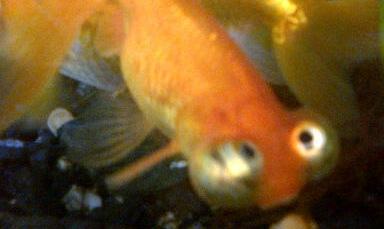
Previous Page Next Page






